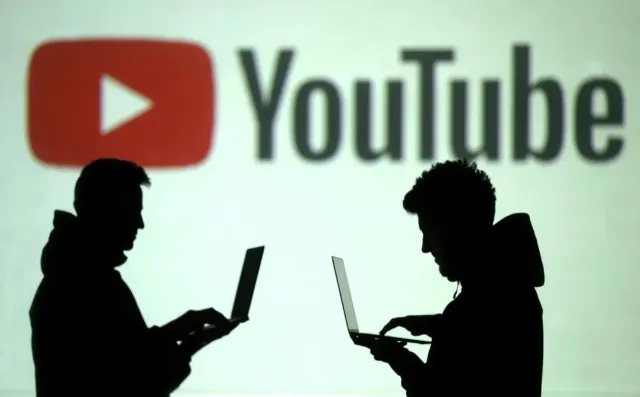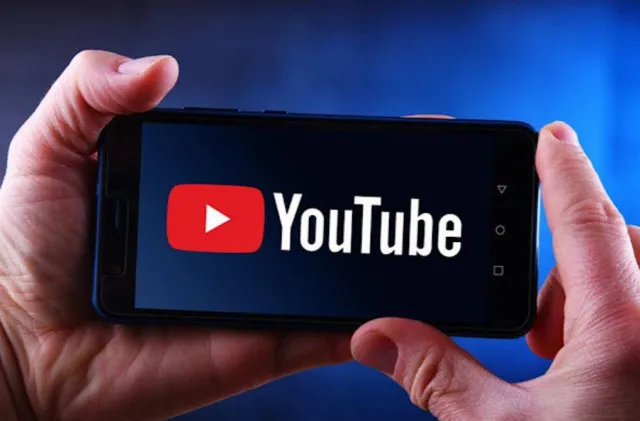Have you ever found yourself wondering what the “Tube” in YouTube really stands for? It’s a question that has puzzled many users of the platform, and the answer provides a fascinating glimpse into the origins of one of the most influential video-sharing platforms in the world. Let’s unravel the story behind YouTube’s name and why “Tube” is more than just a catchy word.
The Birth of YouTube: How It All Began

YouTube, now a global powerhouse for video content, was launched in 2005 by three former PayPal employees: Chad Hurley, Steve Chen, and Jawed Karim. When the platform debuted, its primary goal was to give individuals the ability to upload, share, and discover videos from across the world. But its name held a deeper meaning—something that many people might not have understood at the time.
The name YouTube was carefully chosen, and each part of it reflects the platform’s identity. While most people immediately grasped the significance of “You,” highlighting the personal and user-driven nature of the platform, the term “Tube” held a more layered meaning rooted in the history of television.
What Does “You” in YouTube Mean?
Before diving into “Tube,” let’s quickly touch on the significance of “You” in the name YouTube. This component is a direct reference to the platform’s central concept: you, the user. YouTube was designed to be a space where anyone, from anywhere, could share their own content. It emphasized the idea of user-generated videos, personal expression, and a diverse community of voices.
“You” was chosen to reflect the platform’s democratic nature, putting the power of content creation into the hands of everyday users. Unlike traditional media, where content is created by studios and distributed to viewers, YouTube allows anyone to be both creator and consumer. This concept was groundbreaking in 2005 and remains central to the platform’s appeal today.
So, What Does “Tube” Stand For?
Now, here’s where things get interesting. The “Tube” in YouTube has its roots in television—specifically, in the old technology that was used to power television screens. In the past, televisions were often referred to as “tubes” because of the cathode ray tube (CRT) technology that made them work. These tubes were the main component in TV sets, creating images by directing electrons onto a fluorescent screen.
Thus, the term “tube” became slang for television, a term still remembered fondly by older generations. By incorporating “Tube” into its name, YouTube cleverly drew a connection to traditional TV, but with a twist. Unlike the passive experience of watching TV, where the viewer simply consumes content, YouTube offers a space where users can actively engage, create, and share. It’s like bringing the television experience into the digital age, but with much more interactivity.
The Fusion of Television and the Internet
YouTube’s use of the word “Tube” wasn’t just a nod to old TV technology. It also symbolized how the platform was revolutionizing the concept of television by bringing it online. YouTube gave everyone the ability to be a “broadcaster” without the need for expensive studio equipment or a massive production team. Instead of being limited to watching what TV networks decided to air, users now had control over what they wanted to see—and what they wanted to share.

In essence, YouTube became a virtual version of TV, but with a vast difference: it wasn’t a one-way street. People could post their own content and build communities around shared interests. The concept of “You” and “Tube” together represented a massive shift from passive consumption to active participation.
Why the “Tube” Still Resonates Today
Even though modern televisions no longer use cathode ray tubes, the term “Tube” still resonates with the platform’s audience. It evokes a sense of familiarity and nostalgia while representing the modern way people consume video content online. YouTube has taken what people loved about traditional TV—entertainment, education, and storytelling—and enhanced it by allowing users to connect, comment, and contribute.
In fact, the choice to use “Tube” in the platform’s name encapsulates its mission perfectly: YouTube is, at its core, a platform that takes the best aspects of television and merges them with the endless possibilities of the internet.
How “Tube” in YouTube Caught the Public’s Attention

Over the years, the question of what “Tube” stands for has sparked curiosity among users. Many were amused and intrigued to learn that the term wasn’t just a random addition, but rather a clever connection to television history. As social media grew and more people started to discuss the origins of YouTube’s name, this revelation made waves online, sparking discussions and even light-hearted jokes about the clever twist in the platform’s name.
What started as an obscure reference to old-school TV technology became a talking point for internet users, shedding light on how deeply embedded the platform is in both digital and traditional media landscapes.
Why YouTube’s Name Matters in a Digital World
The combination of “You” and “Tube” highlights the platform’s role in transforming how we consume and interact with video content. YouTube isn’t just a video-sharing website; it’s a stage for creativity, self-expression, and global connection. By blending the nostalgic term “Tube” with the modern, user-focused concept of “You,” the platform stands as a symbol of how entertainment and technology have evolved together.

Today, millions of creators worldwide upload videos to YouTube, from tutorials and vlogs to short films and music videos. Viewers don’t just passively watch—they engage, comment, and even become creators themselves. The platform has become a community where anyone with a camera and an idea can contribute, making YouTube a truly unique space for online video.
Conclusion: The Meaning Behind the Name
In the end, the name YouTube perfectly encapsulates what the platform is all about: it’s a space where “you,” the individual, can broadcast your content as if you had your own TV channel. The “Tube” refers to the television experience brought into the digital age, where the power of video is now in the hands of everyone. This blend of old and new media not only helped YouTube stand out when it launched in 2005 but continues to define its identity today.
So the next time you open YouTube to watch your favorite videos or share your latest creation, you’ll know that the platform’s name is more than just a catchy title—it’s a reflection of the incredible shift from traditional television to a world where anyone can be a creator.